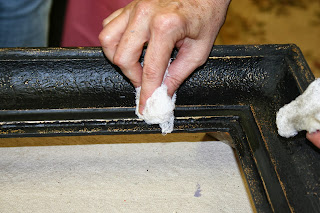I've invited my cousin Dr. Emily Smith back to the blog once again. I really enjoy hearing her stories and I know a lot of you also do, I hope she continues to visit us from time to time. I know she's a very busy lady with her veterinary business in Albion IL and I thank you Emily for taking the time to share with us.
Thank you to Chicken Scratch Poultry
for letting me be a guest on their blog. I am Angie's cousin and I am
a veterinarian in southern Illinois. One of the nice things about
being a veterinarian in a rural area is that when you wake up in the
morning, you never know what you will do that day. I worked in a
predominately large animal practice for the first 10 years of my
career and now I own a predominately small animal practice. We still
do a few cows, sheep, goats and pigs but small animals and horses
make up the bulk of what I see now. Twenty years ago, almost every
house in the country around here had some livestock. It seems as the
“old timers” have quit farming, a lot of pastures have been
turned into fields for crops. It is understandable, but sad to see
those little farms go by the wayside.
Some of my favorite clients to visit
were an older couple (I will call them Elmer and Thelma) who had a
little bit of everything. They had a few cattle, a handful of pigs,
one old horse, and a pair of sheep. All of these animals had names
and they were treated very well. Thelma also happened to have around
300 chickens. Only a few of the chickens had names but she loved all
of them. They had built them a large building and made it into a
really nice chicken coop. They had large fenced area for the
chickens but Elmer was constantly leaving the gate open so many of
them were free range chickens during the day. She was selling eggs
and had herself an “egg route”. She would deliver eggs locally
and even had one day a week where she ventured into the suburbs of a
large nearby city to deliver eggs. I have no idea if it was legal,
but Thelma did it. Elmer and Thelma were very frugal and lived very
simply. One day my boss came in and said he saw Thelma in a used but
newer Cadillac car. When he asked her about it, she said she had
been saving her egg money and bought herself car. She said “When
you take care of your money, it's amazing to see how it stacks up.”
I should have listened to Thelma's advice.
I never had to doctor any of the
chickens, other than occasionally dispensing wormer to them. It was
a good thing the chickens were healthy because we were taught very
little about chickens in vet school. They were considered a minor
species (along with goats and sheep) and very little time was spent
on them. Once when I was on call, Thelma phoned very early in the
morning to tell me they had a cow that was having trouble delivering
a calf. I arrived and found a big calf trying to come backwards and
with only one rear leg present. I didn't feel it moving and told
them it most likely would be born dead. I had to struggle to reach
the other leg and get in a position to pull the calf. I had to use a
device called a calf jack to help deliver it. When it was out, to my
surprise, I saw it's heart beating. It was alive! After a good deal
of rubbing and sticking a piece of straw in it's nose to make it
sneeze, it came around. We stood back and let his momma clean him up
and Thelma said softly “It's another miracle.” I said “Yes, I
didn't think we could get it out alive.” Then she explained to me
that it wasn't a miracle that we got it out alive....she had always
had faith that I could deliver it. She meant that life itself was a
miracle. She said just because it happened everyday didn't mean it
wasn't a miracle. Once again, I learned a lesson, taught by an old
woman on a chilly morning on small farm that I didn't learn in
school.....don't take miracles for granted.
Thelma and Elmer both have passed away
and their little farm was sold. I drive by sometimes and see a few
cows in the pasture. I hope those cows have names....it would make
Thelma happy.
Have a Great Day
Dr. Emily Smith
Have a Great Day
Dr. Emily Smith
















































